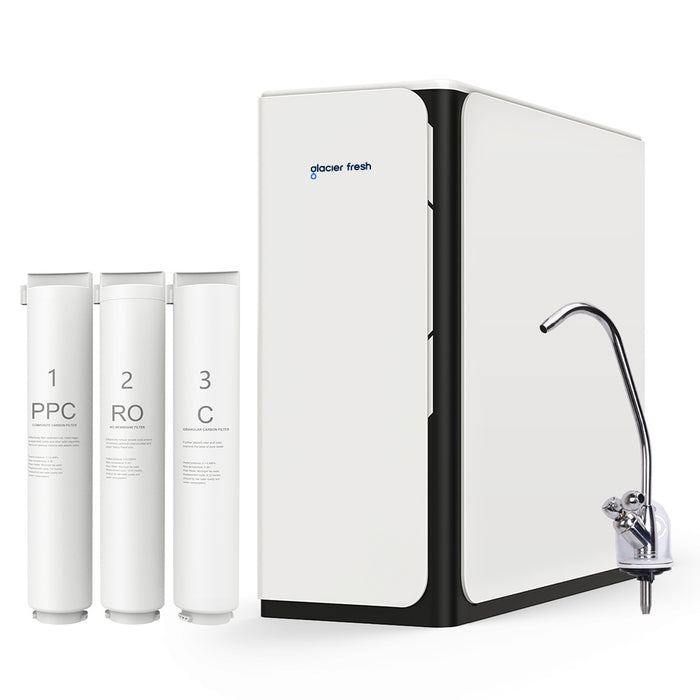Unlocking the Secrets: Discover How an Under-Sink Reverse Osmosis System Transforms Your Water!
In our increasingly health-conscious world, the importance of clean water cannot be overstated. Water is the essence of life, and ensuring that the water we consume is free from impurities is crucial to our health and well-being. This is where water purification systems come into play, and one of the most effective options available today is the under-sink reverse osmosis (RO) system. These systems are becoming increasingly popular in households as they provide a reliable solution to purifying tap water right at the source. In this article, we will delve into the intricacies of under-sink RO systems, exploring their structure and functionality to help you understand just how they transform your water into a cleaner, healthier option.

Understanding the Under-Sink Reverse Osmosis System
An under-sink reverse osmosis system is composed of several key components that work together to purify water efficiently. At the heart of the system is the RO membrane, which acts as a barrier, allowing only water molecules to pass through while rejecting larger contaminants and impurities. Surrounding the RO membrane are pre-filters and post-filters. Pre-filters, typically carbon filters, are used to remove larger particles such as sediment, chlorine, and other chemicals that could damage the RO membrane. After the water has passed through the RO membrane, it then flows to the post-filter, which enhances the taste of the water, making it more palatable. Lastly, the purified water is stored in a dedicated storage tank, ready for use whenever needed. Together, these components create an efficient system that ensures you have access to clean drinking water right at your kitchen sink.
Key Components Explained
Each component of the under-sink RO system plays a vital role in the purification process. The pre-filter is the first line of defense, capturing sediments and chlorine that can clog the RO membrane or alter the taste and quality of the water. This stage is crucial as it prolongs the life of the RO membrane, ensuring optimal performance. The RO membrane itself operates on the principle of osmosis, using high pressure to push water through its microscopic pores, effectively filtering out contaminants such as lead, arsenic, fluoride, and other harmful substances. The post-filter, typically made of activated carbon, further polishes the water, removing any lingering tastes or odors, ensuring that what you drink is not only safe but also enjoyable. My friend once mentioned how switching to an RO system improved the taste of their coffee significantly, showcasing how effective this final step can be in enhancing flavor.
How the Reverse Osmosis Process Works
The reverse osmosis process is a fascinating interplay of natural principles and engineering. It begins with the concept of osmosis, where water moves from an area of low solute concentration to one of high concentration through a semipermeable membrane. In reverse osmosis, this natural flow is reversed by applying pressure to the water on the concentrated side, forcing it through the RO membrane. As water is pushed through, contaminants such as dissolved salts, heavy metals, and microorganisms are left behind, ensuring that only clean water passes through. The filtration process typically occurs in multiple stages. Initially, larger particles are filtered out by the pre-filter, followed by the RO membrane, which handles the bulk of the purification. Finally, the post-filter enhances taste, completing the process. This method is particularly effective, as it can remove up to 99% of total dissolved solids (TDS) and various harmful contaminants, offering peace of mind about the quality of your drinking water.
Benefits of Using an Under-Sink RO System
The advantages of using an under-sink reverse osmosis system are numerous. Firstly, the most notable benefit is the improved taste of the water, which can significantly enhance the flavor of beverages and food prepared with purified water. Moreover, the health benefits are substantial; by removing harmful contaminants, RO systems contribute to better overall health, reducing the risk of waterborne diseases and exposure to toxic substances. Additionally, the convenience of having purified water readily available at your kitchen sink cannot be overstated. Unlike bottled water, which can be costly and environmentally damaging, an under-sink RO system provides a sustainable solution that saves both money and resources. When compared to other water purification methods, such as pitcher filters or countertop units, the under-sink RO system stands out for its effectiveness and reliability, ensuring that your family has access to the highest quality water.
Summary of Benefits and Functionality
In summary, understanding how an under-sink reverse osmosis system functions is essential for anyone considering improving the quality of their drinking water. From the intricate components that work in harmony to the advanced filtration process, these systems provide numerous health benefits and convenience. As we have explored, clean water is a vital part of a healthy lifestyle, and by investing in an under-sink RO system, you can ensure that you and your family have access to safe, great-tasting water every day. Consider the profound impact that clean water can have on your health and well-being, and take the necessary steps to enhance the quality of your drinking water today.








